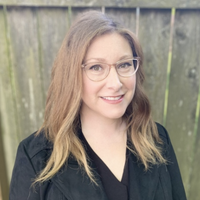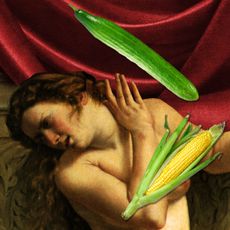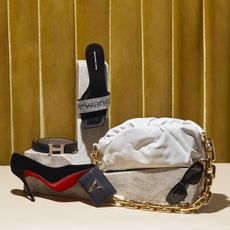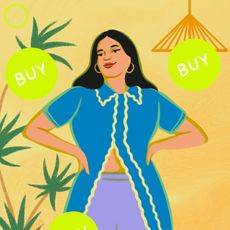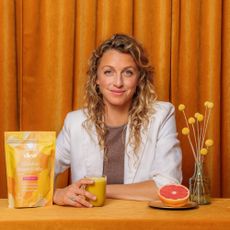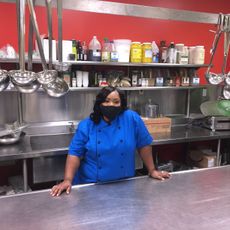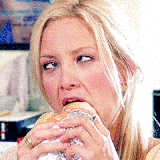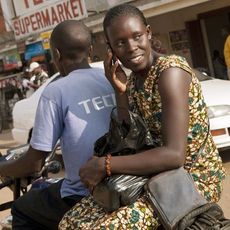Edible Arrangements: An Urban Forager on Eating From Your Own Backyard
Alexis Nikole Nelson (@blackforager), author of a forthcoming guidebook-cookbook, teaches her 4.5 million followers how to ID and cook the wild plants growing all around us.
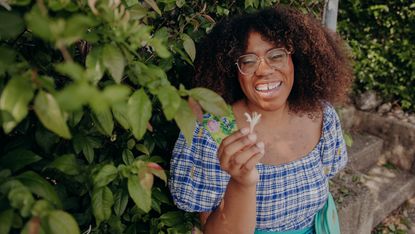

Celebrity news, beauty, fashion advice, and fascinating features, delivered straight to your inbox!
Thank you for signing up to . You will receive a verification email shortly.
There was a problem. Please refresh the page and try again.
Even if all of your produce comes from the grocery store, you’ll likely find Alexis Nikole Nelson’s foraging videos compulsively watchable—she blends the hyped enthusiasm of a kindergarten teacher with the knowledge of an erudite botanist. For example, holding a gorgeous purple wisteria bloom, she speed-talks through a recipe for transforming it into a flavorful simple syrup, including: “The flowers? Edible and delicious. Every other part of the plant? POISON!”
Her millions of followers on Instagram and TikTok tune into her videos about edible plants she finds growing in her Columbus, Ohio neighborhood, or on her travels. She even foraged in Central Park—using black walnuts she found there for spiced Italian-style liqueur and turning milkweed into fritters. Nelson, 30, wants foraging to be accessible to everyone, and is helping Black people to reconnect to food traditions that were outlawed after emancipation.
Marie Claire: How did you first get into foraging?
Alexis Nikole Nelson: I definitely went slowly, which is also the way I advise everyone to start. My mom is an avid gardener, and my dad is a great cook. They’re both really outdoorsy, despite that not being the norm for Black kids [who grew up] in the ‘60s, because the outdoors haven’t traditionally been a safe place for Black people. When I was about 5 years old, I was with my mom in her garden, and she pointed out onion grass, also called field garlic. When we broke it, the air flooded with the delicious smell of garlic, and I was like, “Can we eat it?” I was so surprised when the answer was yes! It was mind-blowing for me that there was this accidental food just randomly growing in our backyard. I kept learning about edible local plants, like how wood sorrel tastes like nature’s Lemonheads.
MC: How did you know what was safe to eat?
ANN: When I graduated from college, I was extraordinarily broke and needed something other than ramen noodles in my diet. I checked Forage, Harvest, Feast by Marie Viljoen out of the library, and I started getting to know my neighborhood through a completely different lens. Suddenly I noticed the giant Siberian elm tree on my block, or the Japanese knotweed that was literally growing through the porch of my rental house. It made my neighborhood seem so magical that I could have three square meals a day from what was around me.
A post shared by Alexis Nikole 🌾🍀 (@blackforager) (opens in new tab)
A photo posted by on
MC: Were any of the plants an acquired taste?
ANN: We’ve bred our domesticated produce to taste as good as humanly possible, and a lot of times that means breeding out much of its original nutrition. But that’s not the case with foraged plants, because they’re still as they were meant to be, so they can sometimes taste more bitter to our modern palates.
MC: How did you know what to do with these new ingredients?
ANN: You get creative. Common mallow leaves, for example, get really slimy and mucilaginous, just like okra. If they don’t work as a salad green, what if I use them to thicken a soup? Dandelion greens are pretty bitter, so you learn to blanch them first and then use them for something like spanakopita. Or you swap out things that taste similar. Like when I gather juneberries, it’s hard to find recipes because they’re not an important fruit for us anymore. But they behave the same way as blueberries, so I’ll swap them out in any blueberry recipe. Learning how to use these new ingredients has made me a much better cook.
MC: Is foraging a way to connect to the long human history of living off the land?
ANN: Something very deep in me surges every time that I forage because literally none of us would be here if our ancestors, millennia of humans, hadn’t done this. Foraging was also a big part of the Black enslaved experience in the U.S., especially on plantations where you weren’t being given enough food calorically to do the work demanded of you, so you had to supplement with foraging just to survive. Indigenous folks passed foraging knowledge onto enslaved people, but a lot of this knowledge has been lost.
MC: Why is that?
ANN: Upon emancipation, there were new laws intentionally passed to guard both public and private property much more than they had previously. If you weren’t a landowner, which newly-freed slaves weren’t, you weren’t allowed to go onto any land you didn’t own to forage, hunt, or fish. Freed Black people had almost no options to feed themselves, so many had to return to those same plantations they’d just left and work as sharecroppers to survive. So as a Black woman, it feels revolutionary to be foraging, something that was very deliberately taken away from my ancestors. I hope other Black folks will see that outdoors spaces are just as much for us.
A post shared by Alexis Nikole 🌾🍀 (@blackforager) (opens in new tab)
A photo posted by on
MC: If newcomers want to get into foraging, how should they start?
ANN: In August, much of the country is growing wild spinach, also called goosefoot or lamb’s quarters, that’s great for salads, so start by looking for that. Ideally, go out with someone knowledgeable—seeing a plant up close and personal is the quickest way to have it stick in your noggin. You can also join a local foraging Facebook group for your region. And download iNaturalist, a crowdsourced science app that checks pictures of plants against a database and can usually tell you the species—just don’t make that be-all of what you choose to eat. It’s more of a nice tool for getting to know what’s growing at each time of year in your area.
MC: Looking back, did you have any idea one day you’d be a plant influencer?
ANN: Of course not! I double majored in theater and environmental science. At the time, my mom was like, “What are you going to do with that, write plays about whales?” You know, this is close.
-
 How to Minimize Your Pores, According to Dermatologists
How to Minimize Your Pores, According to DermatologistsSay goodbye to the gunk.
By Samantha Holender
-
 Why Homemade Sex Toys Are Always a Bad Idea
Why Homemade Sex Toys Are Always a Bad IdeaSafety is sexy.
By Gabrielle Ulubay
-
 Prince Charles Candidly Reacts to His Portrayal on “The Crown”
Prince Charles Candidly Reacts to His Portrayal on “The Crown”The hit Netflix series’ fifth season drops later this year—with the Prince of Wales as a main character.
By Rachel Burchfield
-
 Behind the Scenes of a Women-Led Acquisition
Behind the Scenes of a Women-Led AcquisitionEver wonder what goes on during an M&A deal? Here, Tradesy founder Tracy DiNunzio reveals what it's like to say goodbye to the company she built as it merges with Vestiaire Collective.
By Tanya Benedicto Klich
-
 The Competition for Creators
The Competition for CreatorsCreators hold more power than ever—and companies are taking stock.
By Rachel Epstein
-
 Hannah Mendoza Is Coming For Your Morning Coffee
Hannah Mendoza Is Coming For Your Morning CoffeeHannah Mendoza was mixing adaptogenic lattes and mushroom coffees out of a van two years ago. Now her company, Clevr Blends, counts Meghan Markle as a fan—and investor.
By Megan DiTrolio
-
 This Chef Is Feeding Maryland’s Hungry—in More Ways Than One
This Chef Is Feeding Maryland’s Hungry—in More Ways Than OneMonique Jordan leads a job training program run by the Maryland Food Bank, fighting the state's hunger crisis by helping students learn how to help themselves.
By Kristen Mascia
-
 What to Get Your Work Bestie for the Holidays
What to Get Your Work Bestie for the HolidaysBecause you know you couldn’t make it without her.
By Louise Hart
-
 What Your Work Lunch Says About You
What Your Work Lunch Says About YouOh, you're one of *those.*
By Chelsea Peng
-
 What It Costs to Be Me
What It Costs to Be MeFive women from around the world reveal how they spend their money, what they're saving for — and their most expensive shoes!
By Lea Goldman
-
 How to Contact Past Job References
How to Contact Past Job ReferencesMarieClaire.com rounded up five experts to answer: What's the best way to get back in touch with job references?
By Cubicle Coach
